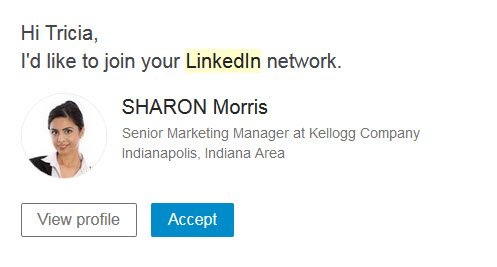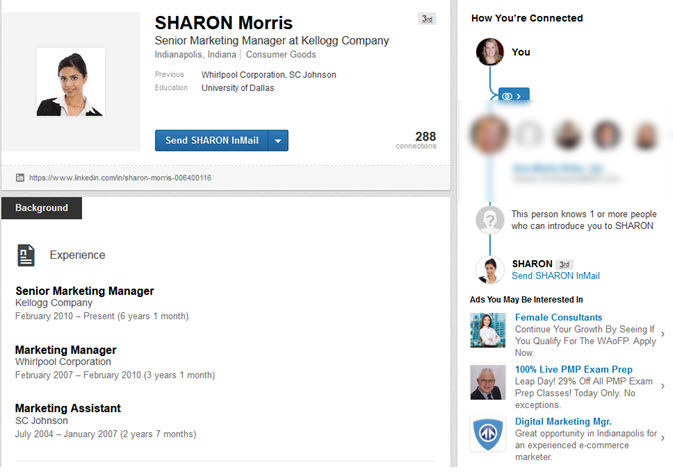My posts may include paid links for which I earn a commission.
This morning as I was making my way through emails I found a LinkedIn request from someone I didn’t recognize. When I recognize a name, I always accept. When I don’t recognize the name, I go through a few steps to figure out whether I should accept. This (likely) spammer almost got me! Here are the steps I took and how they almost made their way into my network. More importantly, I explain why it’s a good thing I didn’t accept.
The Invitation Email
At first glance, nothing in the invitation jumped out at me as being fishy. Sometimes the whole invitation will be in another language or the company they are with is clearly something I don’t want to be involved with.

The fact that the first name was in all caps was a little weird to me but not enough of a red flag to ignore it completely. I wasn’t sure if that might just be a LinkedIn formatting issue. Plus, it would be plausible for someone in Indianapolis to want to connect with me, especially someone in marketing. So I clicked to view the profile.
The Profile
The profile had a couple of things going for it. First of all, I recognized all of the companies listed. The positions made sense as did the years in each position.
Even more importantly was the “How You’re Connected” section.

Now, I have blurred out my friends’ pictures because I don’t want to embarrass any of them. But suffice to say there were a LOT of Indy friends who were 1 connection away from “Sharon.” Many of those Indy friends are bloggers or other people in marketing. So in my mind it would make total sense that someone from Kellogg might possibly want to contact me about some kind of Brand Influencer opportunity (see my last post on that).
The Profile Picture
My last step is always checking out the profile picture, and this is where I hit gold. See that profile image? I saved it and ran it through Tineye. The result? This:
 We’ve got a match! The only way that profile picture is “Sharon Morris” is if Sharon is “Isolated Indian Professional Business Woman Presenting With Hand.”
We’ve got a match! The only way that profile picture is “Sharon Morris” is if Sharon is “Isolated Indian Professional Business Woman Presenting With Hand.”
What If I Had Accepted?
So what is the worst thing that would have happened if I had accepted the request? At the very least, I would have received some inbox spam that I could have ignored.
More importantly, my own network reputation is on the line. Using LinkedIn is all about building up trust and sharing connections. Clearly this spammer was targeting Indianapolis business professionals. If I had accepted their request, the next person they invited would have seen that I was a direct connection to the spammer, so they would have been more likely to accept the request. Once they started getting spammed, they would have looked back and seen that I was the one who basically vouched for the spammer by being the connection.
Do yourself a favor and look closely before accepting LinkedIn requests. You may not care if you get a little spam in your inbox, but your own connections might. Keep your network clean so that people will trust your recommendations and connections.
Hi Tricia, Wow – I would have never thought of that – I think I just automatically ‘trust’ LinkedIn, and what they send me.. Also, I’m not sure I would ever think there would be something wrong with using a stock photo? The point to research before accepting is very, very well taken! 🙂
Your intuition and investigative skills are the star in this story! Great job and thanks for sharing!
Good catch. You’d think Linkedin would be better at spotting this kind of activity. It really lowers the value of their platform when this can happen so easily.
That’s a really good point, Durk! I am hearing more and more people saying that they don’t find as much value in LinkedIn anymore because of things like this and the amount of spam. It seems like they are going to have to do something to give it back its legitimacy or else it’s just going to turn into another non-professional social network.